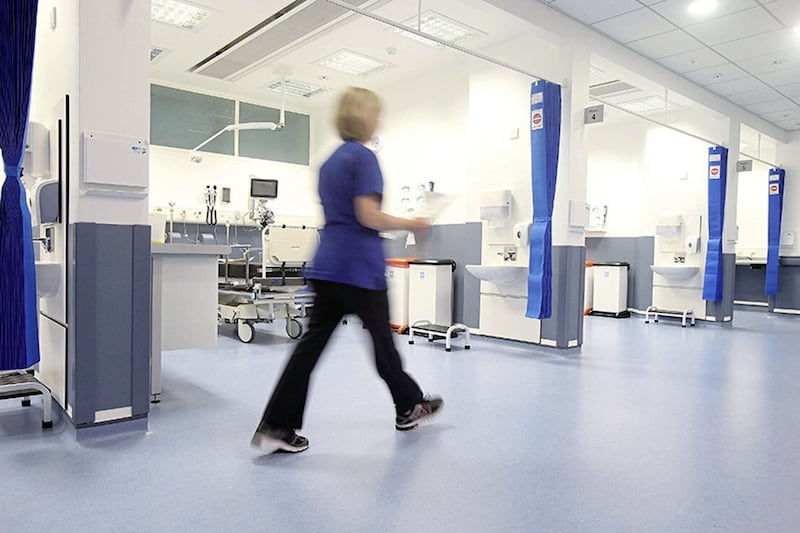BELFAST has a lot going for it. That can be hard to believe at times, I know, but the latest Good Growth for Cities Index names the city as the best of the devolved cities to live and work in when measured against key economic wellbeing factors including jobs, health, income and skills, as well as work-life balance, housing affordability, travel to work times, etc.
Pausing to reflect on that, it is obvious that Belfast has been on an unprecedented regeneration journey over the last 20 years, with new grade A offices, numerous hotels and purpose-built student accommodation all being delivered.
Our challenge now is not the old one of wondering will we ever attract investment, but the current one of trying to ensure that Belfast doesn’t lose its character to identikit glass boxes. All very normal in a modern city.
There is however one key ingredient missing in Belfast’s regeneration story - a sizeable city centre population - despite targets to add 11,500 residential units to central Belfast over the next number of years.
Cities everywhere follow a well-established pattern, with densely populated centres moving outwards to roomier, less dense suburbs.
In Belfast, it is almost the exact opposite. At its height, Belfast was home to 385,000 people in 1911. But, with deindustrialisation came depopulation, accelerated by the Troubles, with the city’s population today about 100,000 lower than it was a hundred years ago.
The situation is most acute in our city centre. Belfast stands apart from other cities in having one of the most underpopulated city centres anywhere. Whilst this might have been understandable during thirty years of civil strife, the phenomenon of city centre living growth that other cities are experiencing has passed us by.
Between 2004 and 2019, Manchester witnessed a 185 per cent growth in its city centre population. During the same period, the number of people living in central Belfast has risen by only 44 per cent and at a total of just 7,764 people, it is nearly four-times smaller in size than Manchester.
Grant Thornton and Belfast Chamber have collaborated to produce a detailed research report entitled ‘Growing Belfast’ because of our shared belief that the surest sign that our city has regenerated is a growth in city centre living and the undoubted benefits that would bring to Belfast. Our ‘Growing Belfast’ report sets out the scale of the prize that can be secured if our city hits
The council’s ‘Belfast Agenda’ target of 11,500 residential units in our city centre. Our
analysis shows that achieving that aim would:
• Swell the city’s population by c.20,200 - the equivalent of a town the size of Omagh;
• Produce an additional spend in the city centre economy of £165.9 million, greatly assisting retail, hospitality and leisure businesses located there; and
• Eliminate 4,090 tonnes per annum of CO2 as a result of fewer commutes, the same as planting roughly 205,000 trees a year.
But beyond even the sizeable economic benefits, repopulating Belfast city centre is both symbolic and socially significant. Achieving a genuinely shared city centre community across a mix of housing tenure types would be a clear indication that Belfast’s rebirth is complete.
Just over 20,000 more people living in central Belfast would overcome the sense that our city goes to sleep at 5pm on weekday evenings, create a safer city and help address the ‘brain drain’ and help secure our emerging status as a tech hub.
There is no doubt about the opportunity that awaits Belfast if we were to achieve our city centre population target. Troublingly though, our research illustrates that, at current rates of development, we run the risk of falling short of the 2035 population by a staggering 20,100.
Belfast is the UK’s 12th largest city and the second biggest on this island but for the last two years, there have been ZERO new residential starts in our city centre. It seems that when it comes to residential development, whilst other cities are delivering, we are standing still.
The inescapable conclusion from our research with Belfast Chamber is that, if Belfast is to achieve its population aims by 2035, then we need to accelerate our efforts. Belfast needs to grasp thorny issues like planning, placemaking and how we can incentivise city centre living.
While there cannot be a ‘once size fits all’ approach to regenerating the city centre, looking at how other places have done it provides a clear message that focus, good design, preserving and conserving heritage, collaboration, and integrating wider economic development and service provision into planning are all part of the mix.
It is important also to strike the balance between growing communities and sustaining existing character.
Among the many features of successful city centre living initiatives, concerted, coordinated efforts that are true partnerships between the public and private sector stand out as crucial elements. For example, cities in Great Britain have actively supported city centre living through the rates system, making such developments much more viable financially.
In Belfast the ambition to grow the city’s population is clear. At present, the route to doing so is less obvious.
Andrew Webb is chief economist at Grant Thornton







